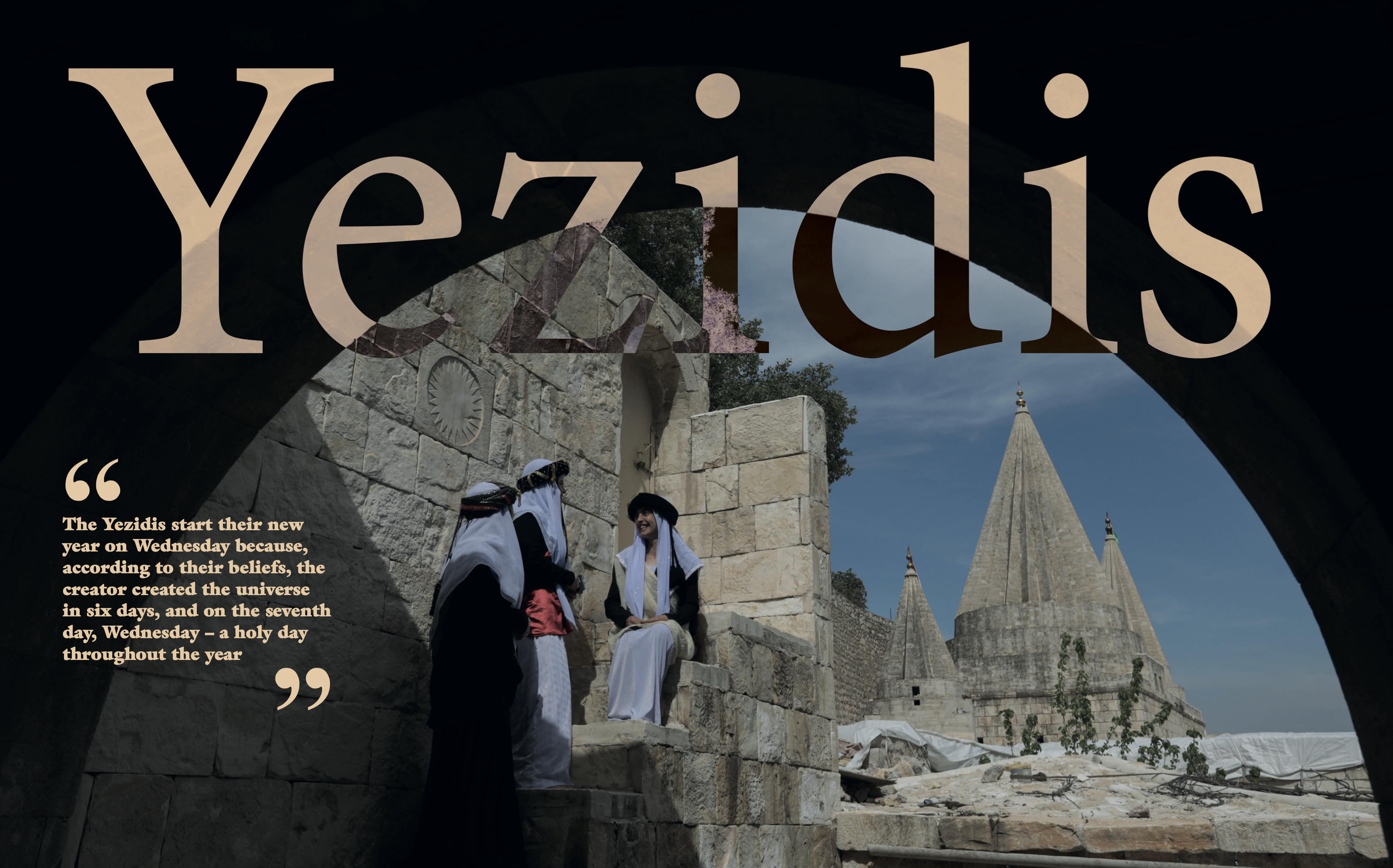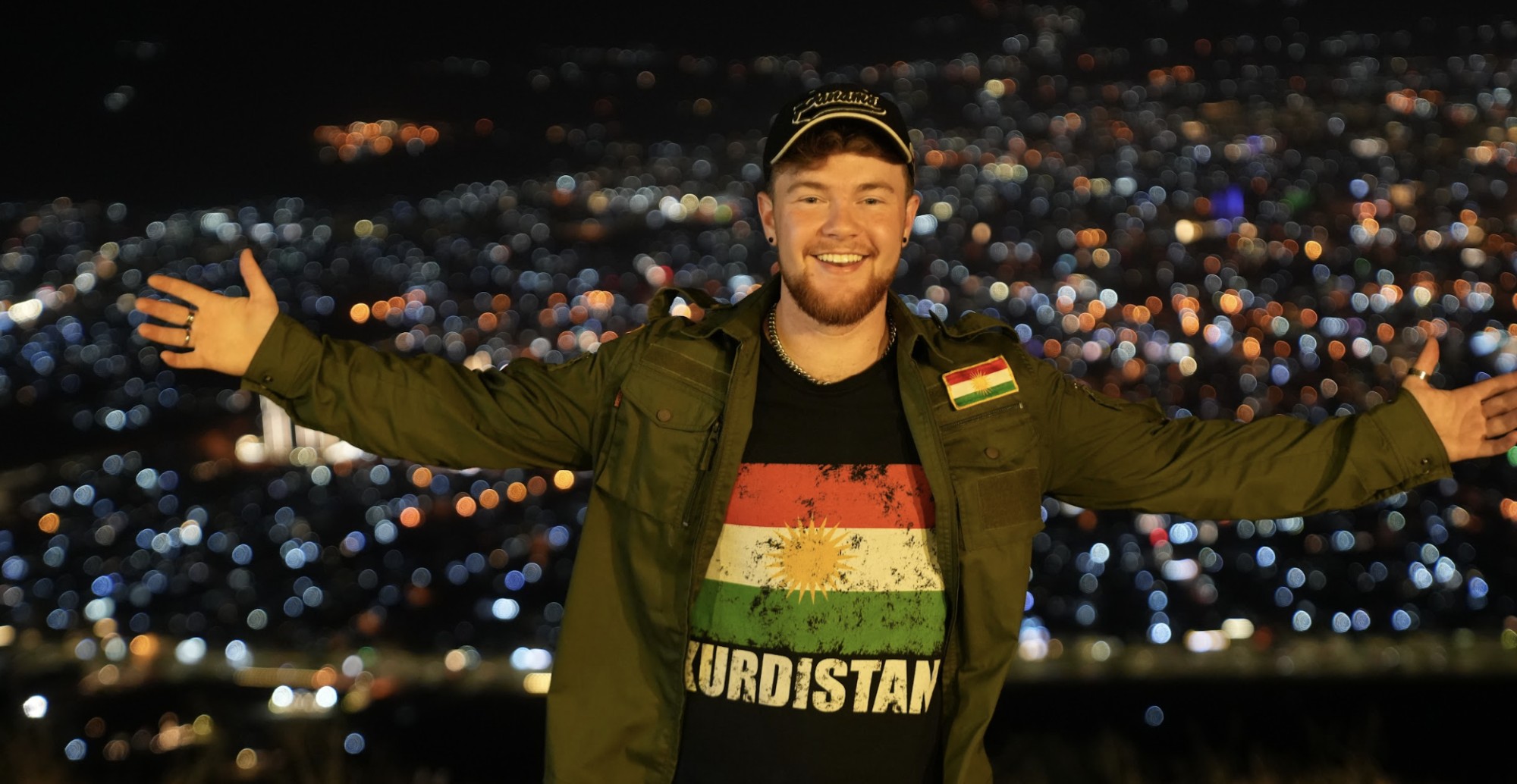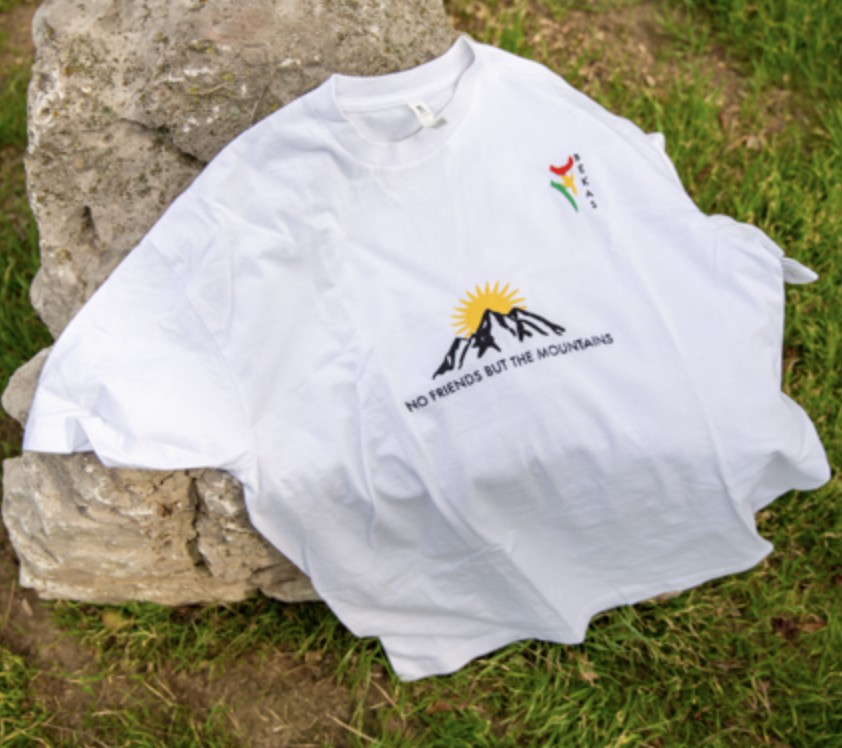Thousands of Yazidis flocked to Lalish, the spiritual heartland of their faith, to celebrate the eve of their new year. Located in a valley about 40 kilometers from the city of Duhok, Lalish is where Yazidis find both spiritual solace and physical protection during times of invasion and persecution.
The Yazidi New Year, Charshama Sor (Red Wednesday), falls annually on the first Wednesday of April in the Eastern calendar. The Yazidis start their new year on Wednesday because, according to their beliefs, the creator created the universe in six days, and on the seventh day, Wednesday – a holy day throughout the year – the earth took form at Lalish, a particularly sacred religious site for the Yazidis.
The Yazidis believe that Charshama Sor is a time of renewal and blessing. They pray for a year filled with peace, prosperity, and good health. They also pray for the forgiveness of their sins.
A place of pilgrimage
Yazidis from all over the world make a pilgrimage to Lalish to celebrate their New Year, coming from places as far away as Europe, Armenia, Turkey, Syria, Russia, and Georgia.
"I traveled from Germany to celebrate the New Year at Lalish, the holiest place on earth for Yazidis,” Sheikh Xwededa, a religious Yazidi man told Kurdistan Chronicle.
Explaining the reason behind his attire, Sheikh Xwededa stated: "I am wearing a white dress, as it symbolizes purity and cleanliness and serves as a constant reminder of God and death." He then concluded by reciting a verse of a Kurdish poem ئەگەر تو بوی میر، خودێ نەکەی ژ بیر, which translates to "even if you become a prince, you must not forget God."
The eve of the New Year holds a special significance for Yazidi families, providing a rare opportunity to come together, share news, and take commemorative photographs.

After genocide and displacement
In August 2014, the Yazidi community faced a horrific genocide campaign by ISIS in northern Iraq's Shingal district. Thousands of Yazidi women and men were killed or enslaved, and tens of thousands more were displaced.
Eight years after the genocide against the Yazidi people, 2,693 Yazidis, including 1,262 women and 1,431 men, remain missing. Meanwhile, approximately 180,000 Yazidis remain internally displaced persons (IDP), mostly living in 15 IDP camps in the Kurdistan Region of Iraq.
Najla Jameel Khalaf, a 22-year-old Yazidi girl who was displaced from Shingal, expressed a strong desire to return to Shingal as soon as possible. "I wish to return," she lamented, "but most of Shingal is still in ruins, and there is no stability." Najla was dressed in a white gown with a red and white jamadani draped around her shoulders. She explained that the red jamadani symbolizes the blood of Yazidi martyrs who died at the hands of ISIS.
The President of the Kurdistan Regional Government, Nechirvan Barzani, reaffirmed his commitment towards the rescue efforts aimed at saving the thousands of Yazidis who were kidnapped by ISIS.
In a statement issued on the occasion of the Yazidi New Year, Barzani congratulated all Yazidi brothers and sisters throughout the Kurdistan Region, Iraq, and the world. He paid tribute to the Yazidi victims of terrorism and assured everyone that the search for the missing Yazidis would continue until their fate was revealed. "As long as there are missing Yazidis, we will stand with them and continue our efforts to rescue them," President Barzani said.

Celebrating but living with trauma
As the sun set, 365 candles, one for each day of the year, were lit, transforming Lalish's temple into a mesmerizing sight of eternal fire.
The following day, on Wednesday, every Yazidi household decorates their entrance with red anemone roses, locally known as kulika nissan or April poppy roses, which are harvested from the surrounding mountains. For the Yazidis, the red color of the anemone rose represents love and continuity in life, as well as the good news of the arrival of blessings and goodness. It also serves as a warm welcome to visitors.
Food is shared among neighbors. They pay each other visits in the morning and afternoon and serve sweets, chocolate, tea, and coffee to their visitors.
Despite the lingering pain of the past, this year's Yazidi New Year celebrations were filled with joy and cheer. Unlike previous years, when the community was still reeling from the aftermath of ISIS’s genocide, this year's festivities offered a glimpse of hope and resilience.
However, their struggle is far from over, and the Yazidi community continues to face numerous challenges as they rebuild their lives and seek justice for the atrocities committed against them.
As he bid farewell to his guests in the town of Shariya, a Yazidi man expressed his mixed emotions towards the New Year festivities, stating: "we are happy and celebrating, but we are still living with the trauma."
Qassim Khidhir has 15 years of experience in journalism and media development in Iraq. He has contributed to both local and international media outlets.

